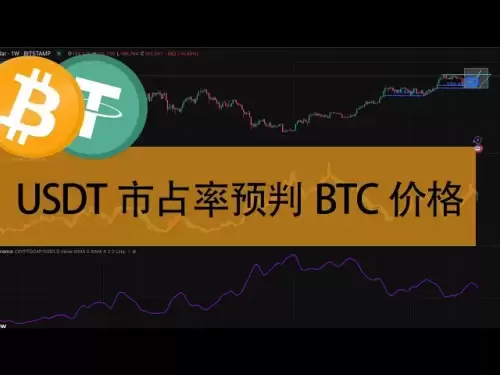 |
|
 |
|
 |
|
 |
|
 |
|
 |
|
 |
|
 |
|
 |
|
 |
|
 |
|
 |
|
 |
|
 |
|
 |
|
Cryptocurrency News Articles
Moody's Downgrades US Credit Rating to Aa1, Ending a Century of Perfect Score
May 18, 2025 at 02:16 am
Moody's downgraded the United States credit rating from Aaa to Aa1 on May 16, 2025, citing long-term fiscal deterioration. The downgrade ended a century-long era

Moody’s downgraded the United States credit rating from Aaa to Aa1 on Monday, ending a century-long era in which the country held a perfect score from all major agencies. The downgrade, which follows downgrades by S&P in 2011 and Fitch earlier in 2023, leaves the country without a top-tier score for the first time since the rating system began.
The downgrade by Moody’s comes amid concerns over the ballooning U.S. public debt and the lack of a sustainable fiscal framework to counterbalance it.
The agency pointed to soaring public debt, rising interest payments, and the lack of a sustainable fiscal framework.
Data from the U.S. Department of the Treasury shows total public debt has now crossed $34.7 trillion.
The chart from FRED (Federal Reserve Economic Data) confirms a steep rise in debt starting around 2020, coinciding with pandemic-era stimulus packages.
The visual trend shows that between 2000 and 2020, debt levels increased steadily. However, post-2020, the pace turned exponential. By 2024, total federal debt approached the $34 trillion mark. As of Q2 2025, the trajectory remains upward, with no visible signs of slowing.
This downgrade coincides with a lack of agreement in Congress over a $3.8 trillion tax and spending proposal. Moody’s warned that if Trump-era tax cuts are extended without offsets, the annual deficit could reach 9% of GDP by 2035.
Markets reacted swiftly. US Treasury yields increased, reflecting concerns about long-term borrowing costs. Equity futures dipped following the news.
The White House dismissed the rating action, stating it was politically motivated, but did not release additional policy guidance or counter-data.
Moody’s also flagged systemic risks in the federal budget structure. Without substantial policy changes, the agency warned that debt servicing costs will consume a larger share of the national budget, making fiscal reform harder in the future.
This downgrade does not change existing bond terms, but it does affect borrowing costs and investor sentiment. US sovereign debt is still considered safe globally, but the absence of a triple-A rating from all agencies may prompt reassessments in global fixed-income portfolios.
Bitcoin Supply on Exchanges Hits New Lows, Mirroring Rising Holder Confidence
Between April 17 and May 2, Bitcoin supply on exchanges dropped from 1.47 million to 1.42 million BTC, according to data from on-chain analytics firm Santiment. The figure briefly increased to 1.43 million BTC by May 7, but the upward movement was short-lived.
As of May 17, 2025, the supply has fallen again to 1.41 million BTC, marking a fresh local low in exchange balances. This drop comes despite recent price fluctuations, with Bitcoin price hovering around $103,000, as shown in the same data set.
The chart from Santiment shows a steady decline in red (exchange supply) against a rising green line (BTC price), particularly from late April through mid-May. The divergence between exchange balances and market price often signals growing investor preference for self-custody.
When traders reduce their holdings on exchanges, it suggests a shift from short-term speculation toward longer-term storage. Such behavior reduces immediate sell pressure, especially during uncertain macroeconomic conditions.
The chart also shows that this trend has remained consistent even after Bitcoin crossed above the $100,000 mark. While price movements continue to fluctuate in a narrow range, lack of significant shifts in either direction suggests traders may be choosing to wait rather than sell at current levels.
This current figure—1.41 million BTC on exchanges—represents the lowest level since early April. Previous resistance levels in this metric have now shifted downward, reflecting broader caution across both retail and institutional holders.
Such movements are often tracked for broader market structure analysis. Declining exchange balances are usually observed during accumulation phases, signaling that fewer coins are immediately available to sell on spot markets at market prices.
However, it's crucial to note that these observations alone do not predictably determine future price trends. Instead, these changing supply dynamics form one key part of the broader picture in tracking overall investor behavior.
Bitcoin Price Tracks $103K as Ichimoku Cloud Stays Flat
Bitcoin is trading at $103,246 on Thursday, May 17, according to a 4-hour chart from TradingView. The Ichimoku Cloud indicator shows a consolidation phase with no clear breakout signal in sight.
The Kijun-sen line (red) sits at $103,241, closely aligned with the current price. This flat position signals a balanced market, with neither buyers nor sellers dominating. The price has moved sideways along
Disclaimer:info@kdj.com
The information provided is not trading advice. kdj.com does not assume any responsibility for any investments made based on the information provided in this article. Cryptocurrencies are highly volatile and it is highly recommended that you invest with caution after thorough research!
If you believe that the content used on this website infringes your copyright, please contact us immediately (info@kdj.com) and we will delete it promptly.
-

-

-

-

- Mutuum Finance (MUTM) Captures the Rare Electricity of a Project That Commands Attention for Both Its Blistering Rise and Grounded Purpose
- May 18, 2025 at 02:10 pm
- Momentum crackles through the corridors of crypto, but rarely does a project command attention for both its blistering rise and grounded purpose.
-

-

-

-

-

- NORTH WALES CRICKET LEAGUE PREMIER DIVISION REPORTS – MAY 17
- May 18, 2025 at 01:55 pm
- St Asaph (18) 176-10 Menai Bridge (5) 123-10





























































